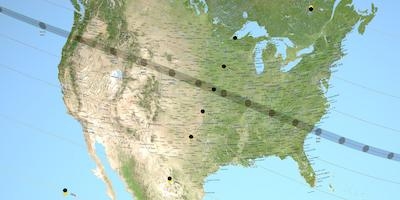Thu, Aug 10, 2017
Advertisement
More News
 ANN's Daily Aero-Term (10.02.25): Radar Contact Lost
ANN's Daily Aero-Term (10.02.25): Radar Contact Lost
Radar Contact Lost Used by ATC to inform a pilot that the surveillance data used to determine the aircraft's position is no longer being received, or is no longer reliable and rada>[...]
 ANN's Daily Aero-Linx (10.02.25)
ANN's Daily Aero-Linx (10.02.25)
Aero Linx: International Cessna 170 Association The International Cessna® 170 Association (TIC170A) was formed in 1969. We have over 1,000 members who own more than 850 aircraf>[...]
 NTSB Final Report: Powrachute LLC Airwolf
NTSB Final Report: Powrachute LLC Airwolf
Pilot... Attempted To Enter The Right Side Of The Aircraft And Inadvertently Sat On The Throttle Control Analysis: Security camera video footage showed the pilot fuel the powered p>[...]
 Aero-News: Quote of the Day (10.02.25)
Aero-News: Quote of the Day (10.02.25)
"This contract represents a huge 'win' for the entire CH-53K team. The contract allows Sikorsky to bundle purchase orders from suppliers to achieve better pricing and pass the savi>[...]
 Airborne 09.26.25: Army Cuts AV-Ranks, 2025 ATC Hiring, AF Next-Gen Fighter
Airborne 09.26.25: Army Cuts AV-Ranks, 2025 ATC Hiring, AF Next-Gen Fighter
Also: Purdue In Space?, 4 SpecOps Lost In Helo Crash, Solid-Fuel Ramjet, Ultra-High Airspace Over FL The US Army recently confirmed its plans to thin out its active duty aviation r>[...]
blog comments powered by Disqus





